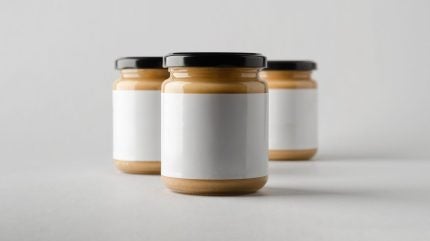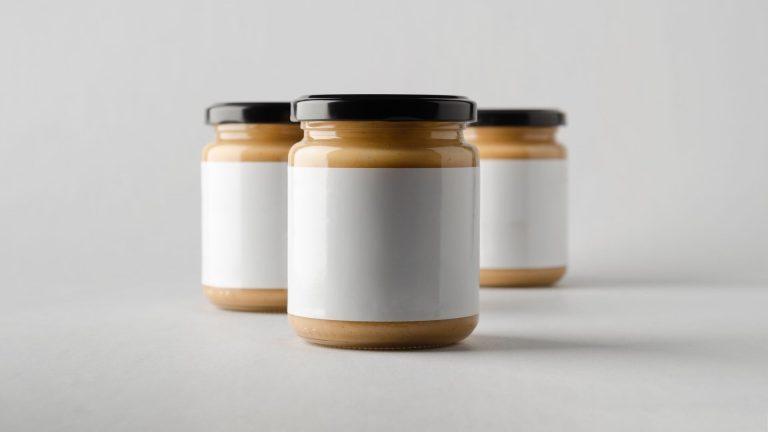
From skincare products to food items and electronics, brands are opting for clean, understated designs that eschew excessive embellishments and unnecessary elements. Credit: Shablon via Shutterstock.
In the fast-paced world of consumerism, where products vie for attention on crowded shelves and online platforms, the role of packaging has evolved beyond mere protection and containment.
It has become a powerful tool for brands to communicate their values, differentiate themselves from competitors, and ultimately, capture the attention of discerning consumers.
In recent years, a trend towards minimalist packaging has emerged, championing simplicity, sustainability, and aesthetic appeal. This article delves into the concept of minimalist packaging, exploring its benefits, design principles, and the impact it has on consumer behaviour.
The rise of minimalist packaging
In an era marked by environmental consciousness and a desire for simplicity, minimalist packaging has gained significant traction across various industries.
From skincare products to food items and electronics, brands are opting for clean, understated designs that eschew excessive embellishments and unnecessary elements. This shift can be attributed to several factors:
Sustainability: Minimalist packaging often translates to reduced material usage, leading to lower environmental impact. By eliminating extraneous layers and opting for recyclable or biodegradable materials, brands can align themselves with eco-conscious consumers and reduce their carbon footprint.
Clutter-free design: In a cluttered marketplace, minimalist packaging stands out for its simplicity and elegance. By adopting clean lines, ample white space, and subtle typography, brands can create a visually striking presence that resonates with consumers overwhelmed by choice.
Brand identity: Minimalist packaging allows brands to convey their identity and values in a concise yet impactful manner. Whether it’s a commitment to sustainability, authenticity, or luxury, the design choices reflect the essence of the brand and foster a deeper connection with consumers.
Design principles of minimalist packaging
Creating effective minimalist packaging requires a keen understanding of design principles and a meticulous approach to visual elements. Here are some key considerations:
Access the most comprehensive Company Profiles
on the market, powered by GlobalData. Save hours of research. Gain competitive edge.
View profiles in store

Company Profile – free
sample
Your download email will arrive shortly
We are confident about the
unique
quality of our Company Profiles. However, we want you to make the most
beneficial
decision for your business, so we offer a free sample that you can download by
submitting the below form
By GlobalData
Country *
UK
USA
Afghanistan
Åland Islands
Albania
Algeria
American Samoa
Andorra
Angola
Anguilla
Antarctica
Antigua and Barbuda
Argentina
Armenia
Aruba
Australia
Austria
Azerbaijan
Bahamas
Bahrain
Bangladesh
Barbados
Belarus
Belgium
Belize
Benin
Bermuda
Bhutan
Bolivia
Bonaire, Sint
Eustatius
and
Saba
Bosnia and Herzegovina
Botswana
Bouvet Island
Brazil
British Indian Ocean
Territory
Brunei Darussalam
Bulgaria
Burkina Faso
Burundi
Cambodia
Cameroon
Canada
Cape Verde
Cayman Islands
Central African Republic
Chad
Chile
China
Christmas Island
Cocos Islands
Colombia
Comoros
Congo
Democratic Republic
of
the Congo
Cook Islands
Costa Rica
Côte d”Ivoire
Croatia
Cuba
Curaçao
Cyprus
Czech Republic
Denmark
Djibouti
Dominica
Dominican Republic
Ecuador
Egypt
El Salvador
Equatorial Guinea
Eritrea
Estonia
Ethiopia
Falkland Islands
Faroe Islands
Fiji
Finland
France
French Guiana
French Polynesia
French Southern
Territories
Gabon
Gambia
Georgia
Germany
Ghana
Gibraltar
Greece
Greenland
Grenada
Guadeloupe
Guam
Guatemala
Guernsey
Guinea
Guinea-Bissau
Guyana
Haiti
Heard Island and
McDonald
Islands
Holy See
Honduras
Hong Kong
Hungary
Iceland
India
Indonesia
Iran
Iraq
Ireland
Isle of Man
Israel
Italy
Jamaica
Japan
Jersey
Jordan
Kazakhstan
Kenya
Kiribati
North Korea
South Korea
Kuwait
Kyrgyzstan
Lao
Latvia
Lebanon
Lesotho
Liberia
Libyan Arab Jamahiriya
Liechtenstein
Lithuania
Luxembourg
Macao
Macedonia,
The
Former
Yugoslav Republic of
Madagascar
Malawi
Malaysia
Maldives
Mali
Malta
Marshall Islands
Martinique
Mauritania
Mauritius
Mayotte
Mexico
Micronesia
Moldova
Monaco
Mongolia
Montenegro
Montserrat
Morocco
Mozambique
Myanmar
Namibia
Nauru
Nepal
Netherlands
New Caledonia
New Zealand
Nicaragua
Niger
Nigeria
Niue
Norfolk Island
Northern Mariana Islands
Norway
Oman
Pakistan
Palau
Palestinian Territory
Panama
Papua New Guinea
Paraguay
Peru
Philippines
Pitcairn
Poland
Portugal
Puerto Rico
Qatar
Réunion
Romania
Russian Federation
Rwanda
Saint
Helena,
Ascension and Tristan da Cunha
Saint Kitts and Nevis
Saint Lucia
Saint Pierre and Miquelon
Saint Vincent and
The
Grenadines
Samoa
San Marino
Sao Tome and Principe
Saudi Arabia
Senegal
Serbia
Seychelles
Sierra Leone
Singapore
Slovakia
Slovenia
Solomon Islands
Somalia
South Africa
South
Georgia
and The South
Sandwich Islands
Spain
Sri Lanka
Sudan
Suriname
Svalbard and Jan Mayen
Swaziland
Sweden
Switzerland
Syrian Arab Republic
Taiwan
Tajikistan
Tanzania
Thailand
Timor-Leste
Togo
Tokelau
Tonga
Trinidad and Tobago
Tunisia
Turkey
Turkmenistan
Turks and Caicos Islands
Tuvalu
Uganda
Ukraine
United Arab Emirates
US Minor Outlying Islands
Uruguay
Uzbekistan
Vanuatu
Venezuela
Vietnam
British Virgin Islands
US Virgin Islands
Wallis and Futuna
Western Sahara
Yemen
Zambia
Zimbabwe
Kosovo
Industry *
Academia & Education
Aerospace, Defense &
Security
Agriculture
Asset Management
Automotive
Banking & Payments
Chemicals
Construction
Consumer
Foodservice
Government, trade bodies
and NGOs
Health & Fitness
Hospitals & Healthcare
HR, Staffing &
Recruitment
Insurance
Investment Banking
Legal Services
Management Consulting
Marketing & Advertising
Media & Publishing
Medical Devices
Mining
Oil & Gas
Packaging
Pharmaceuticals
Power & Utilities
Private Equity
Real Estate
Retail
Sport
Technology
Telecom
Transportation &
Logistics
Travel, Tourism &
Hospitality
Venture Capital
Tick here to opt out of curated industry news, reports, and event updates from Packaging Gateway.
Submit and
download
Visit our Privacy Policy for more information about our services, how we may use, process and share your personal data, including information of your rights in respect of your personal data and how you can unsubscribe from future marketing communications. Our services are intended for corporate subscribers and you warrant that the email address submitted is your corporate email address.
Simplicity: At the heart of minimalist packaging lies the principle of simplicity. Strive for clean, uncluttered designs that convey the essential information without overwhelming the consumer. Embrace whitespace and minimalist graphics to create a sense of sophistication and clarity.
Typography: Selecting the right typography is crucial in minimalist packaging design. Opt for sans-serif fonts with clean lines and modern aesthetics. Ensure legibility and hierarchy to guide the consumer’s eye and convey information effectively.
Colour Palette: Minimalist packaging often features a restrained colour palette, with an emphasis on neutral tones and subtle accents. Choose colours that complement the brand identity and evoke the desired emotions. A limited colour scheme adds coherence and elegance to the overall design.
The impact on consumer behaviour
Minimalist packaging not only captures attention but also influences consumer behaviour in profound ways. Here’s how:
Perceived value: Minimalist packaging can create a perception of premium quality and exclusivity. By stripping away unnecessary elements, brands signal a focus on the product itself, implying superior craftsmanship and attention to detail.
Emotional appeal: Clean, minimalist designs evoke a sense of calm and sophistication, tapping into consumers’ desire for simplicity and authenticity. This emotional appeal fosters a positive association with the brand and encourages repeat purchases.
Sustainability credentials: In an age where sustainability is a top priority for many consumers, minimalist packaging sends a powerful message of environmental responsibility. Brands that embrace sustainable packaging practices not only attract eco-conscious consumers but also contribute to a positive brand image.
In the end, minimalist packaging represents a paradigm shift in the world of branding and consumerism, offering a compelling alternative to traditional, cluttered designs.
By prioritising simplicity, sustainability, and brand identity, brands can create packaging that captivates consumer attention, fosters brand loyalty, and resonates with the values of a modern audience.
As consumer preferences continue to evolve, minimalist packaging is poised to remain a timeless trend, standing the test of time in an ever-changing marketplace.


